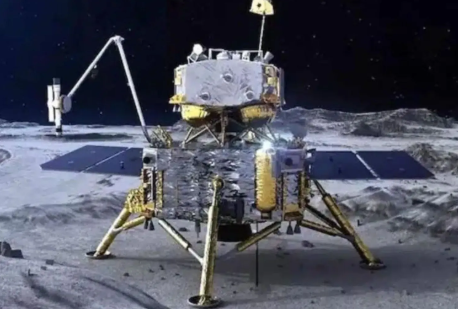Chang’e-6: Historic Lunar Sample Retrieval
In June 2024, China’s Chang’e-6 spacecraft achieved an important milestone and successfully retrieved the first surface samples from the moon’s far side. This region has remained unexplored until now. The samples are shedding light on the moon’s geological history and provide evidence of ancient volcanic activity.
Significance of the Chang’e-6 Mission
The Chang’e-6 mission is very important for lunar research. It marks the first time samples from the moon’s far side have been collected. This area is crucial for understanding the moon’s evolution. The retrieved samples offer vital information about the moon’s volcanic past. They reveal that the far side was once more geologically active than previously thought.
Composition of the Samples
The samples include volcanic rock fragments, specifically basalt. These fragments date back to 4.2 billion and 2.8 billion years ago. The older basalt indicates prolonged volcanic activity. This activity lasted at least 1.4 billion years during the moon’s early history. The findings suggest diverse sources of magma contributed to the volcanic rocks.
The South Pole-Aitken Basin
Chang’e-6 landed in the South Pole-Aitken Basin. This location features the thinnest crust on the moon. Such a thin crust is advantageous for discovering volcanic evidence. The impact crater provides a unique geological context. It allows researchers to study the moon’s volcanic history in detail.
Methodology of Analysis
Researchers employed radioisotope dating to ascertain the age of the basalt samples. This method is critical for understanding the timeline of lunar volcanism. The study compared the new samples with those from previous missions. Lunar samples from the near side had shown volcanic activity dating back to 4.0 billion years ago.
Differences in Volcanic Activity
The basalt samples from Chang’e-6 differ in composition from those collected earlier. This indicates that volcanic activity varied across the moon’s surface. Volcanism on the near side may have continued until about 120 million years ago. The presence of volcanic glass beads from Chang’e-5 supports this theory.
Cessation of Lunar Volcanism
Currently, there is no active volcanism on the moon. This contrasts with other planetary bodies like Earth and Venus. The decline in volcanic activity is attributed to diminishing internal heat sources. Initially, radioactive decay and residual heat sustained volcanic eruptions. Over time, these heat sources depleted, cooling the moon’s mantle.
Implications for Lunar Studies
The Chang’e-6 samples provide a unique opportunity for further lunar studies. They enhance our understanding of the moon’s geological processes. The findings may also influence future lunar exploration missions. The research contributes to the broader knowledge of planetary volcanism. About the moon’s history aids in comparative studies with other celestial bodies.
Important Facts for Exams:
- Chang’e-6: This mission marked the first retrieval of samples from the moon’s far side. It provides crucial vital information about lunar volcanism and geological history.
- South Pole-Aitken Basin: This impact crater features the moon’s thinnest crust. It offers an ideal location for studying volcanic activity and understanding the moon’s geological evolution.
- Radioisotope Dating: This method is essential for determining the age of lunar samples. It helps researchers understand the timeline and duration of volcanic activity on the moon.
- Lunar Volcanism: The moon currently shows no active volcanism. This contrasts with Earth and Venus where volcanic activity persists due to sufficient internal heat sources.
Month: Current Affairs - November, 2024
Category: Science & Technology Current Affairs


